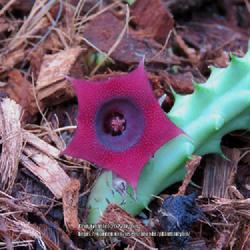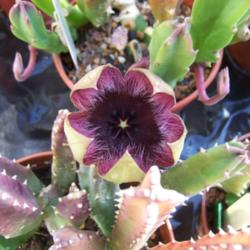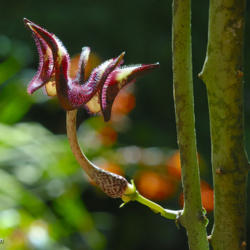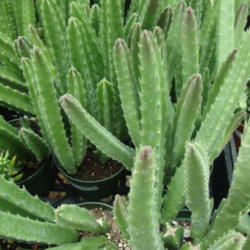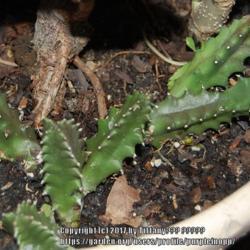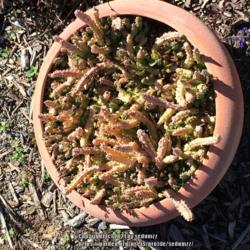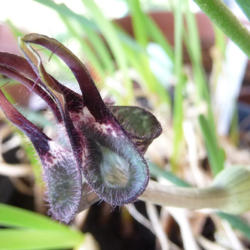Posted by
Baja_Costero (Baja California - Zone 11b) on Jan 16, 2019 9:15 PM concerning plant:
This old genus recently (2017) underwent massive change and expansion as it absorbed the caudiciform Brachystelma and the stem succulent stapeliads, and a bunch of genera are history (for now anyway). The former stapeliad genera now incorporated within Ceropegia include the relatively common Stapelia, Huernia, Hoodia, Orbea, and Caralluma, plus oddities like Pseudolithos and Whiteslonea. Some species names had to change to accommodate everybody. As a result the genus is now quite diverse, a bit confusing, and known for more than just weird stinky flowers pollinated by flies.
Posted by
terrafirma (NE. FL. - Zone 9a) on Aug 24, 2014 10:28 AM concerning plant:
These resemble cacti, with clumps of four-sided spineless stems, but they actually are perennial succulents. The flowers appear in summer, and are large, very fleshy, and shaped like a five-pointed star. I've heard it said that they smell like carrion, yet I've not found it to be so overpowering that it is offensive. They need a cool dry period in the winter months, when they should be protected from frost. They tolerate extreme heat very well.
